Drinking water hygiene with Geberit Safely prevent stagnation
An underestimated source of danger
Legionella bacteria live in water and can cause legionnaires' disease. According to a study conducted by the Robert Koch Institute (German only), the disease causes about as many deaths in Germany as are caused by traffic accidents (German only).
Infection happens through the inhalation of droplets in the shower, for example. Pseudomonas and other germs also create sources of danger.

Hot or cold and always on the move
It is true that drinking water is never completely germ-free, but normally the concentration of germs is harmless. Health risks only arise when the germs are able to multiply. Stagnant water and water temperatures between 25 °C and 50 °C can encourage bacterial growth. In practice, the risk is likely to occur in empty properties, in rooms that are only used intermittently or in cases where dead-end pipes are not in use.
Hygiene problems caused by excessive proliferation of germs can be reliably avoided through:
- correct planning, design and commissioning
- correct operation
- avoidance of stagnation
- avoidance of unfavourable temperatures between 25 °C and 50 °C
Biofilms in drinking water
Biofilms form anywhere that water circulates, including drinking water systems. Normally, they don’t pose any problems and don’t affect the quality of drinking water. Health risks only arise when the germs are able to multiply. Stagnant water and water temperatures between 25 °C and 50 °C can encourage bacterial growth. In practice, the risk is likely to occur in empty properties, in rooms that are only used intermittently as well as in dead-end pipes. Hygiene problems caused by excessive proliferation of germs can be reliably avoided through:
- correct planning, design and commissioning
- correct operation
- preventing stagnation
- preventing unfavourable temperatures between 25 °C and 50 °C
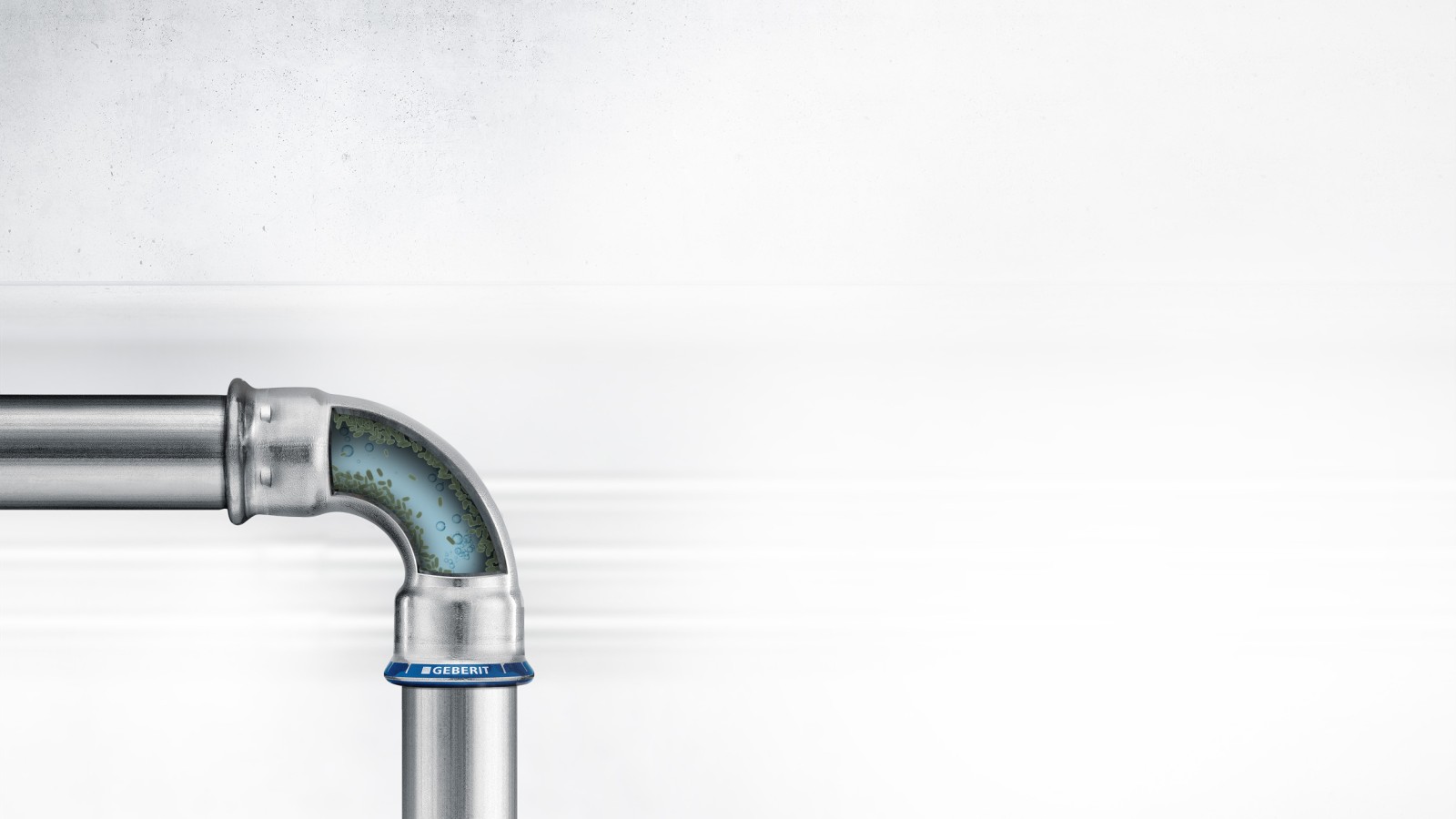
Underestimated risk: legionella and pseudomonas
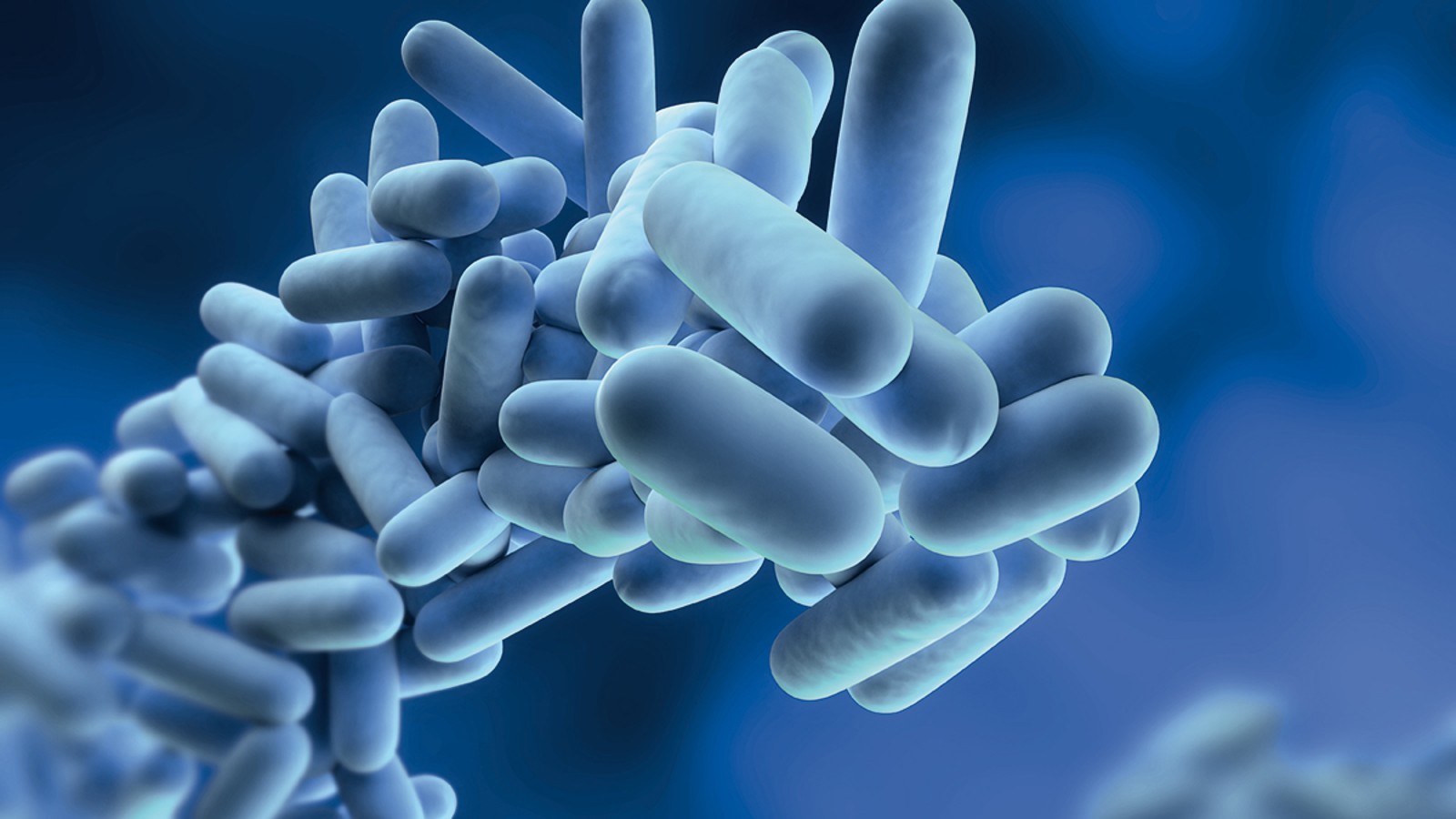

Anyone inhaling legionella can be infected. This can happen anywhere that polluted water droplets enter the air as aerosols; for instance, under the shower or on taps.
Legionnaires’ disease can trigger pneumonia. However, it is often not identified as the cause of illness. For that reason, the estimated number of unreported cases is high and the significance of the disease is underestimated. The same is true of pseudomonas, which can trigger gangrene and develop resistance to antibiotics.
Do you have any questions? We are happy to help you.
Our specialists advise planners, plumbers and other professionals on their projects. They will be happy to advise you on how to best master your current challenges with our products.
Problem areas for drinking water hygiene
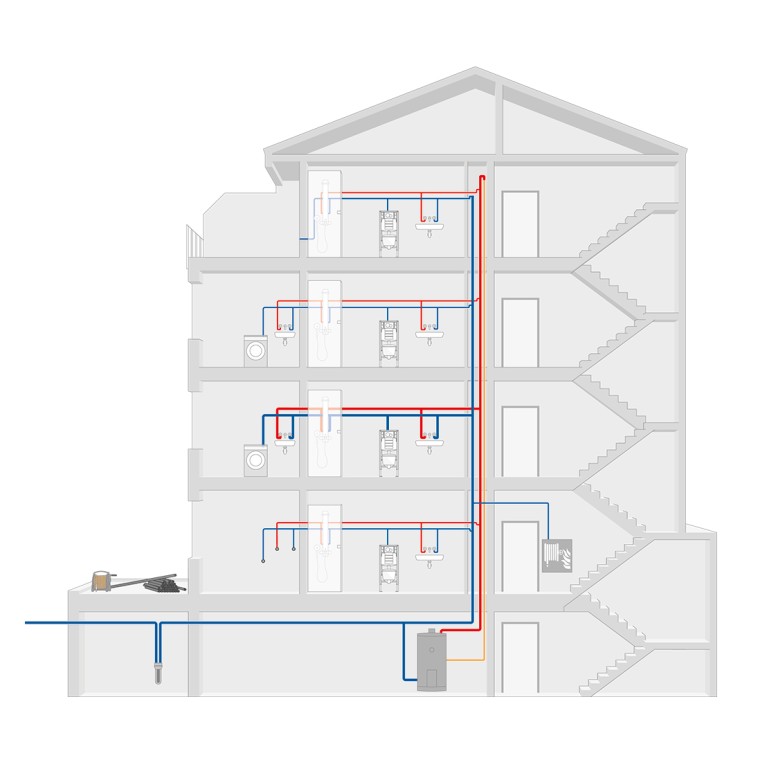
The solution for new and existing buildings
The solution for new buildings
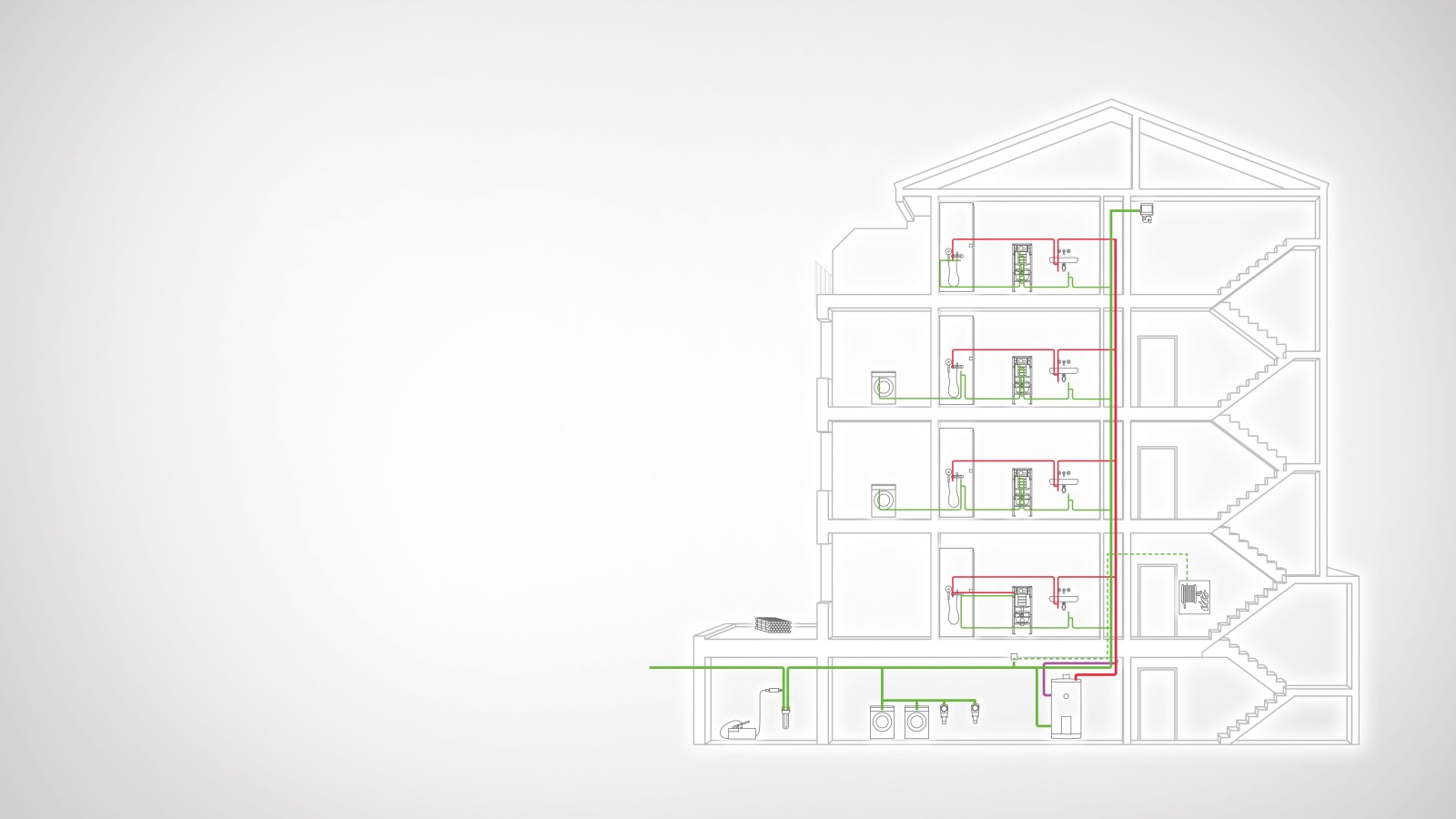
Geberit ensures drinking water hygiene in new buildings right from the beginning and maintains hygiene levels once the systems are up and running. Protective caps on all pipes and fittings prevent soiling during transport and storage. The Geberit hygiene filter ensures that the initial filling of the new drinking water system is hygienically perfect. And the Geberit sanitary flush ensures reliable, economical water replacement as required during operation.
- Geberit sanitary flush: flexible, compact, easy to use
- Geberit hygiene filter: ≥ 99.9999 % bacteria elimination
- Protective caps: no soiling prior to installation
Learn more about Geberit hygiene solutions for new buildings.
When drinking water safety is at great risk
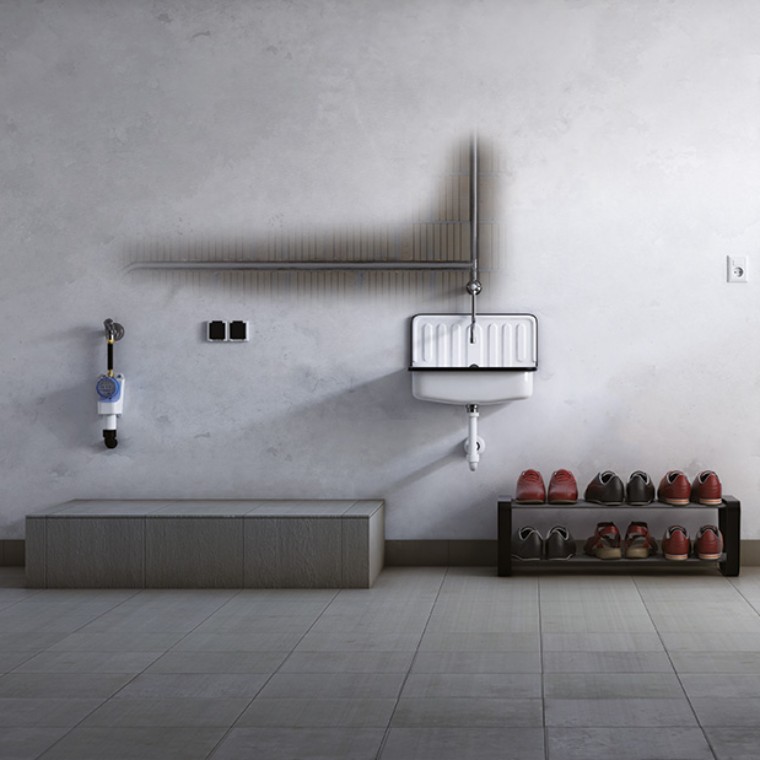
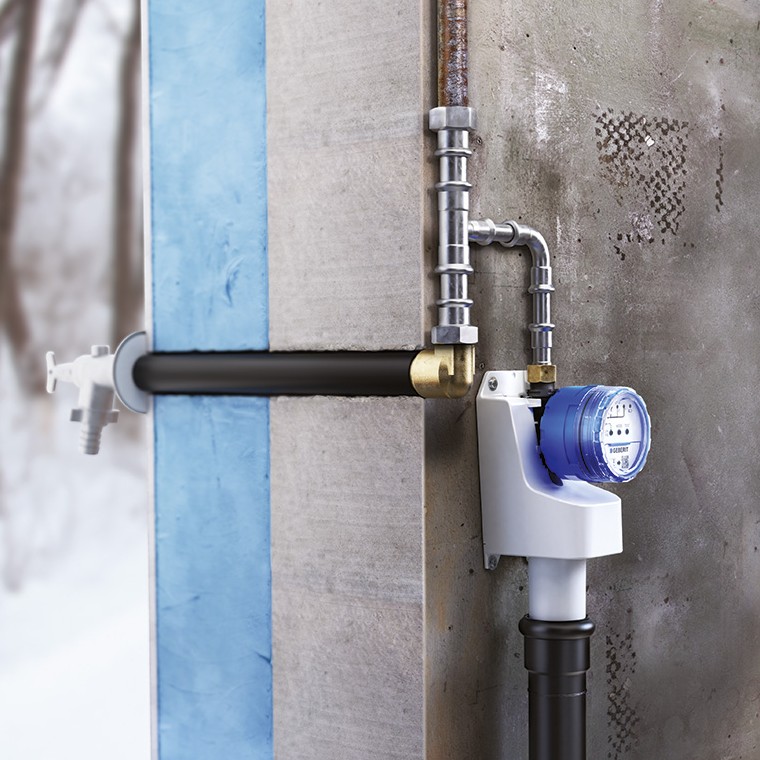
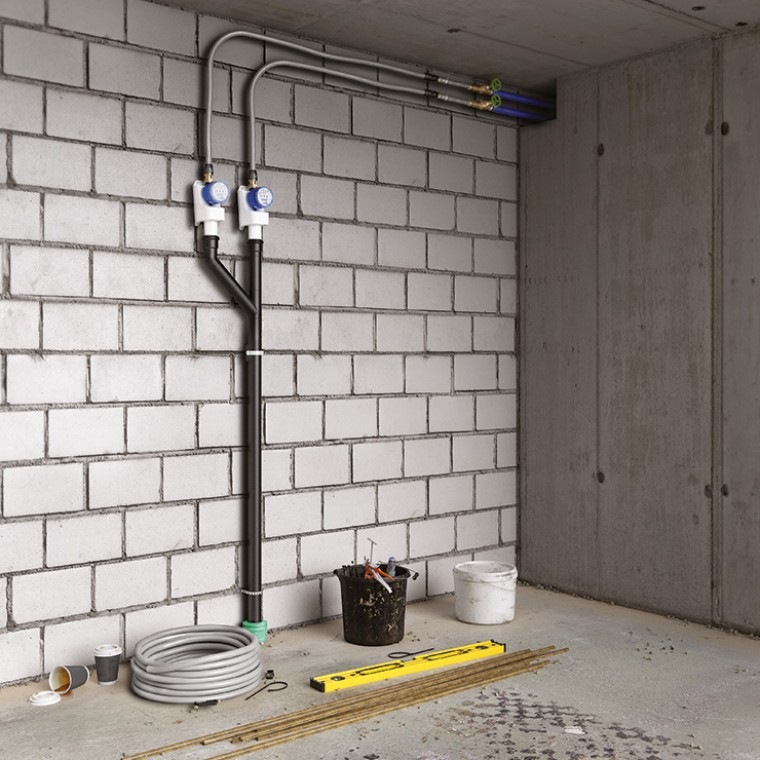
Existing buildings
If serious hygiene problems arise in a drinking water system in an existing building or if drinking water safety is temporarily at risk, then the Geberit sanitary flush Rapid provides a fast, reliable solution. It features compact dimensions and is easy to operate. Thanks to its battery, it can be installed anywhere without the need for a mains connection.
- Cost-effective solution for serious problems
- Prevention or elimination of hygiene problems in drinking water systems
- Bridging temporary stagnation
- Continuous operation if irregular water draw-off can be expected on a long-term basis
As the system can easily be removed after use and employed elsewhere, it can be leased in a similar way to building dehydrators.
Geberit products for drinking water hygiene
Geberit sanitary flush Rapid
Flexible solution
- Compact dimensions
- Battery enables mains-independent operation
- Trap easy to clean
- Operation possible without trap, e.g. in the case of drainage into the cistern
- Flush intervals can be set easily and intuitively
- Easy installation, easy removal, can be reused multiple times
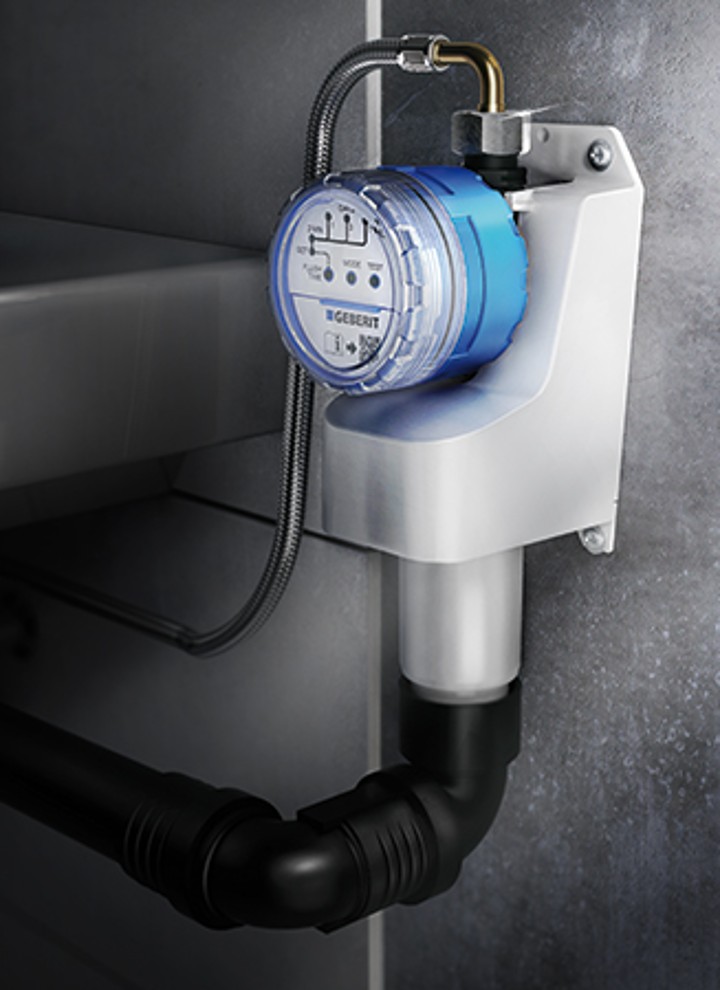
Sanitary flush
Permanent drinking water hygiene
The Geberit sanitary flush offers outstanding performance when it comes to hygienic water replacement. Its compact design makes it easy to install in small spaces in prewall systems, plant rooms, as an exposed solution or at the end of riser pipes.
- Various operating modes: time flush mode – interval flush mode – temperature flush mode – volume flush mode – consumption flush mode
- Log function
- Easy to use with wireless control and programming using the smartphone app
- Adjustable flush performance of up to 2 × 10 litres per minute
- Sensor technology for temperature and volumetric flow rate
- Integrated backpressure sensor
- Integrated water seal
- Cover plates available in a variety of design versions
- Available in various models with either one or two water supply connections
Approvals
- EN 1717 / EN 13077
- Sound insulation in accordance with DIN 4109
- Fire protection according to I 30 to I 90 and F 30
- to F 90 (only in conjunction with Geberit Quattro)
- Class E according to EN 13501-1
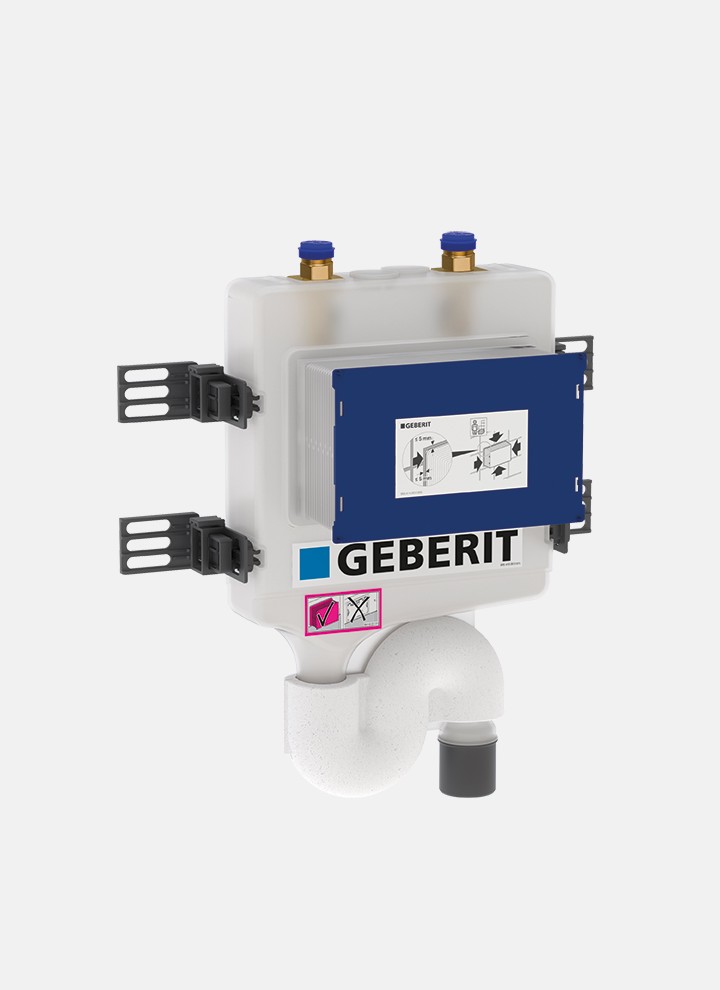
Integrated sanitary flush
Drinking water hygiene in the concealed cistern
The Geberit sanitary flush in the concealed cistern ensures drinking water hygiene without taking up any additional space. It’s an ideal solution if the required installation location already has a WC. The sanitary flush is suitable for use with the Geberit GIS and Duofix installation systems in any constructional situation.
- Various operating modes: time flush mode – interval flush mode – temperature flush mode – volume flush mode
- Log function
- Easy to use with wireless control and programming using the smartphone app
- Adjustable flush performance of up to 2 × 4 litres per minute
- Sensor technology for temperature and volumetric flow rate
- Integrated backpressure sensor
- Water seal: connection to the drainage system via WC
- Leakproof against steam or condensed water
- Compact design in concealed cistern
- No additional service opening required
- Available in various models with one and two water supply connections

Interval sanitary flush unit
Retrofitting the sanitary flush
The Geberit interval sanitary flush unit offers a cost-effective and space-saving solution to maintain drinking water quality. It ensures regular and reliable cold water replacement and can be installed or retrofitted in any Geberit Sigma concealed cistern 12 cm in just a few simple steps.
- Can be used flexibly with actuator plates for single and dual flush systems
- Flush intervals and flush times can be programmed with the Geberit Control App
- Protocols of the interval flushes can be called up with the Geberit Control App
- Quick and easy installation
- Installation in the concealed cistern means no additional space is required
- Power supply provided by the power supply system or batteries
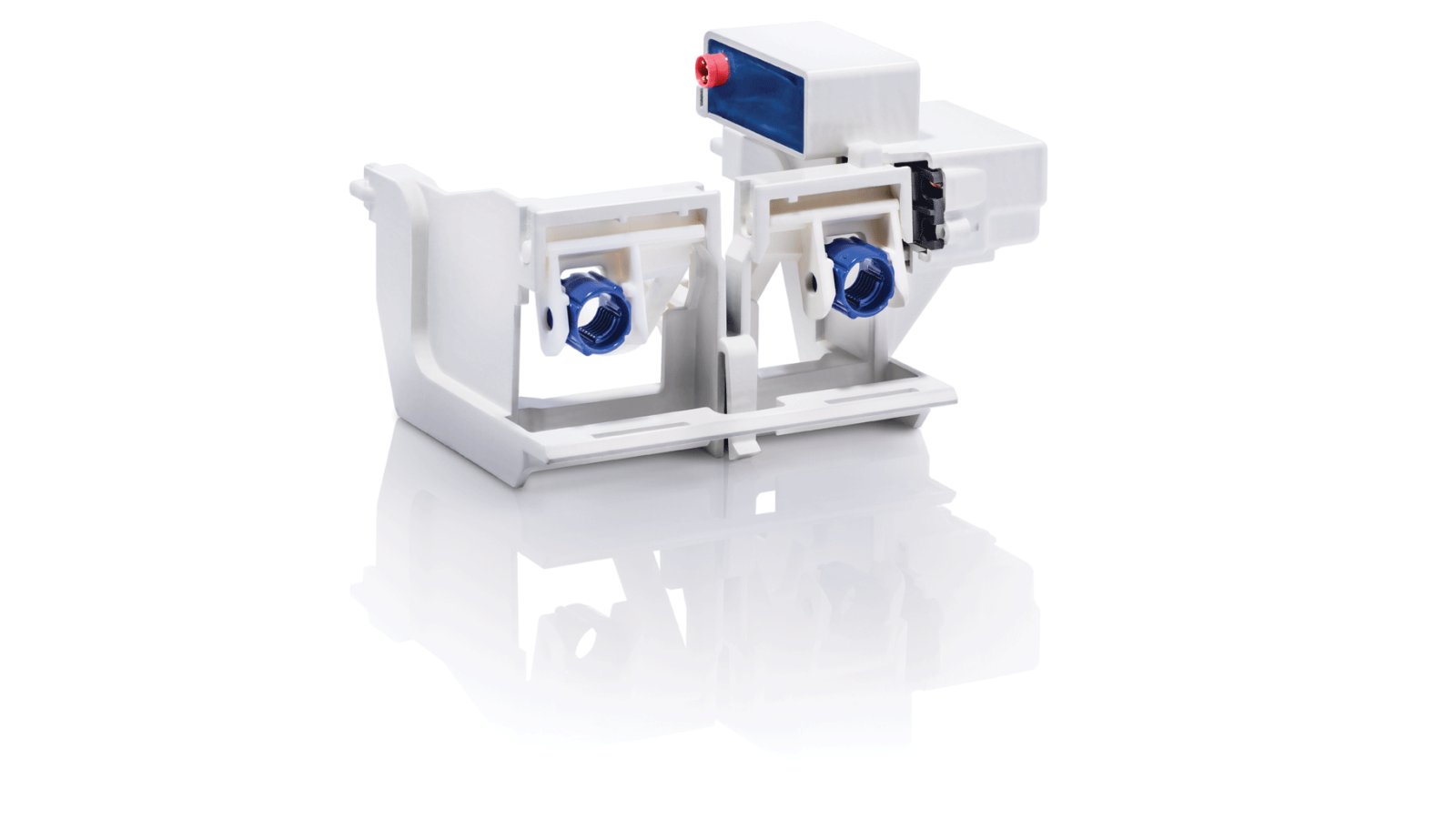
Sampling
Sampling
Clean extraction of the water probe
- Simple and professional sampling
- For mounting on all Geberit angle-seat stop valves
- Flexible mounting: Sampling valve can be rotated through 360°
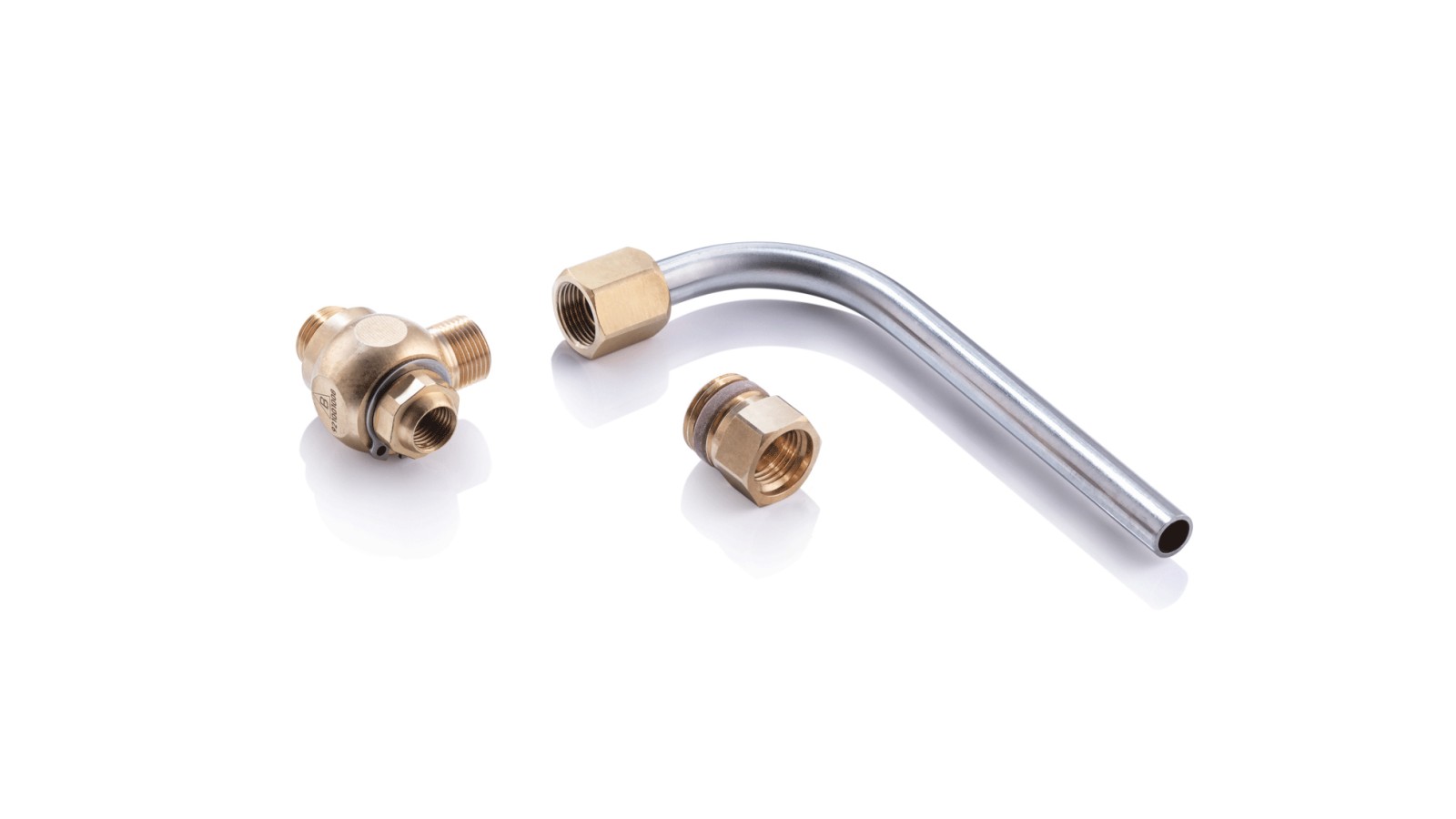
Geberit angle-seat stop valve with connections for all Geberit supply systems
- Long-lasting use thanks to the self-lubricating lip seal in the spindle seal
- Ergonomically shaped hand wheel
- ¼ inch connection facilitates the installation of a temperature sensor with thermowell
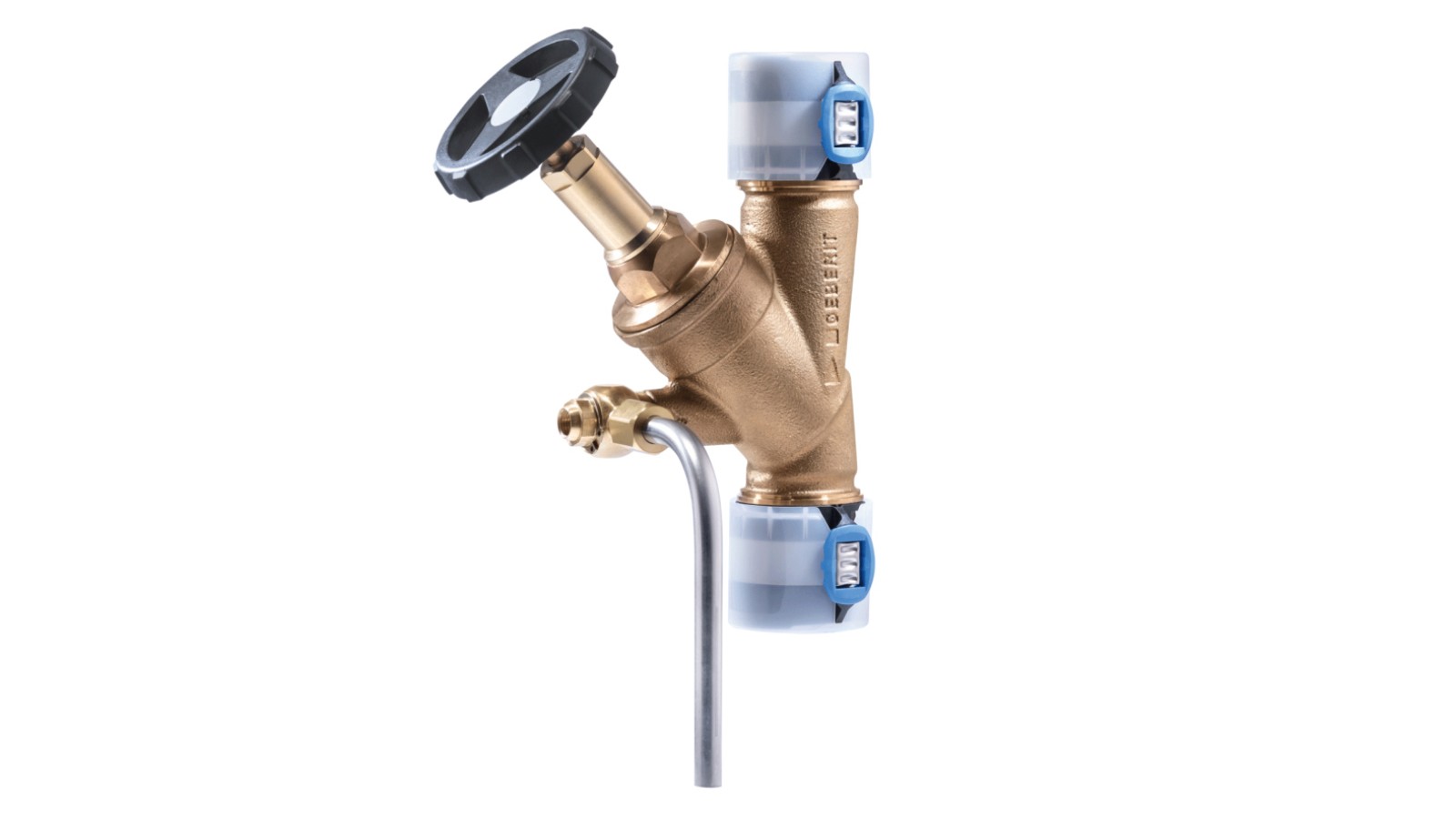
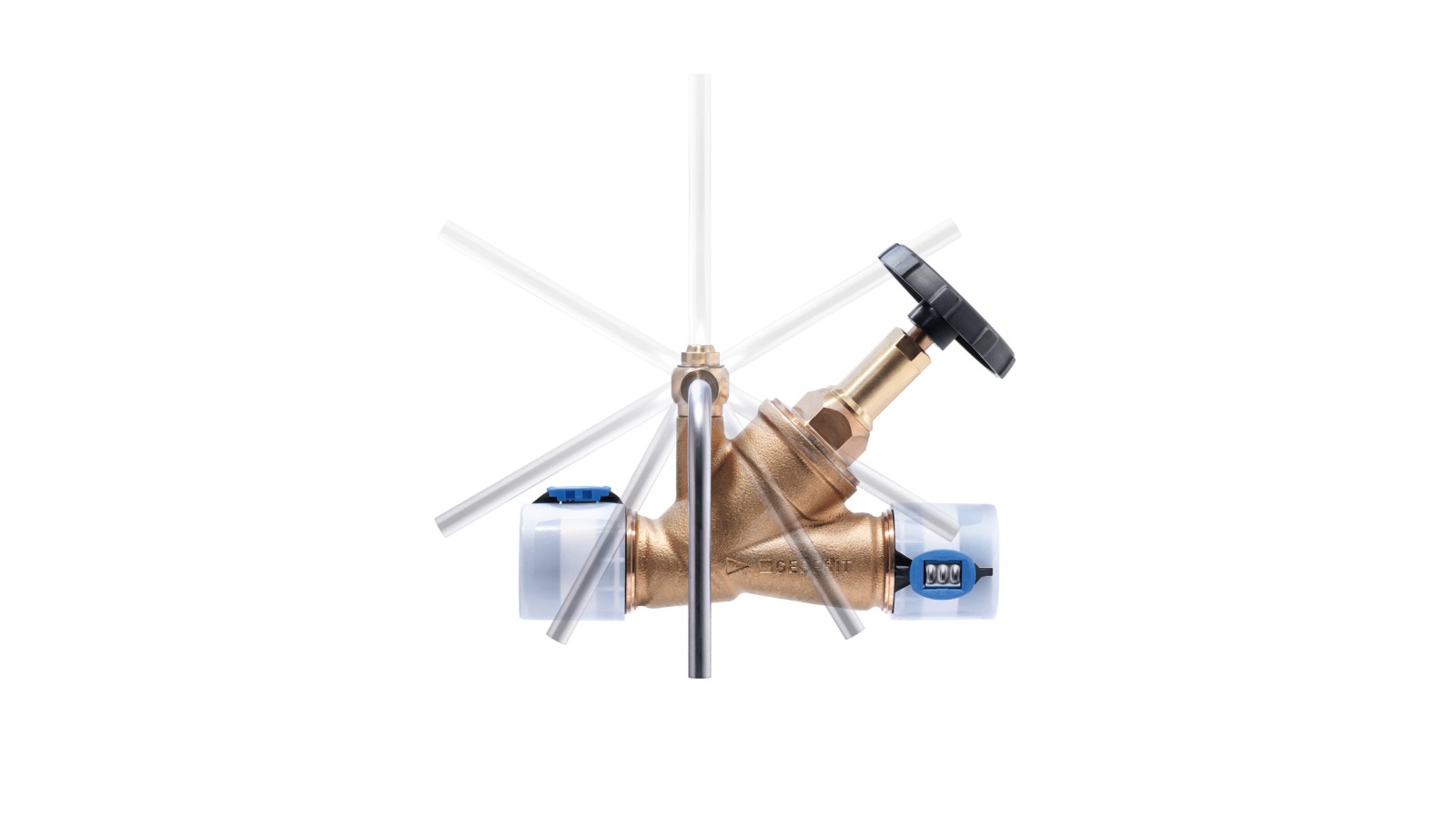
Sensorik
Geberit temperature and volumetric flow rate sensor
- For potable water (cold and hot)
- For detecting the water temperature and the amount of water flushed
- For connecting to the Geberit sanitary flush
- Temperature sensor PT1000
- Vortex flow sensor for detecting the volumetric flow rate
- Square frequency output signal 0/5 V DC and PT1000
- Stranded wire cable 5 × 0.25 mm², maximum distance to sanitary flush 300 m
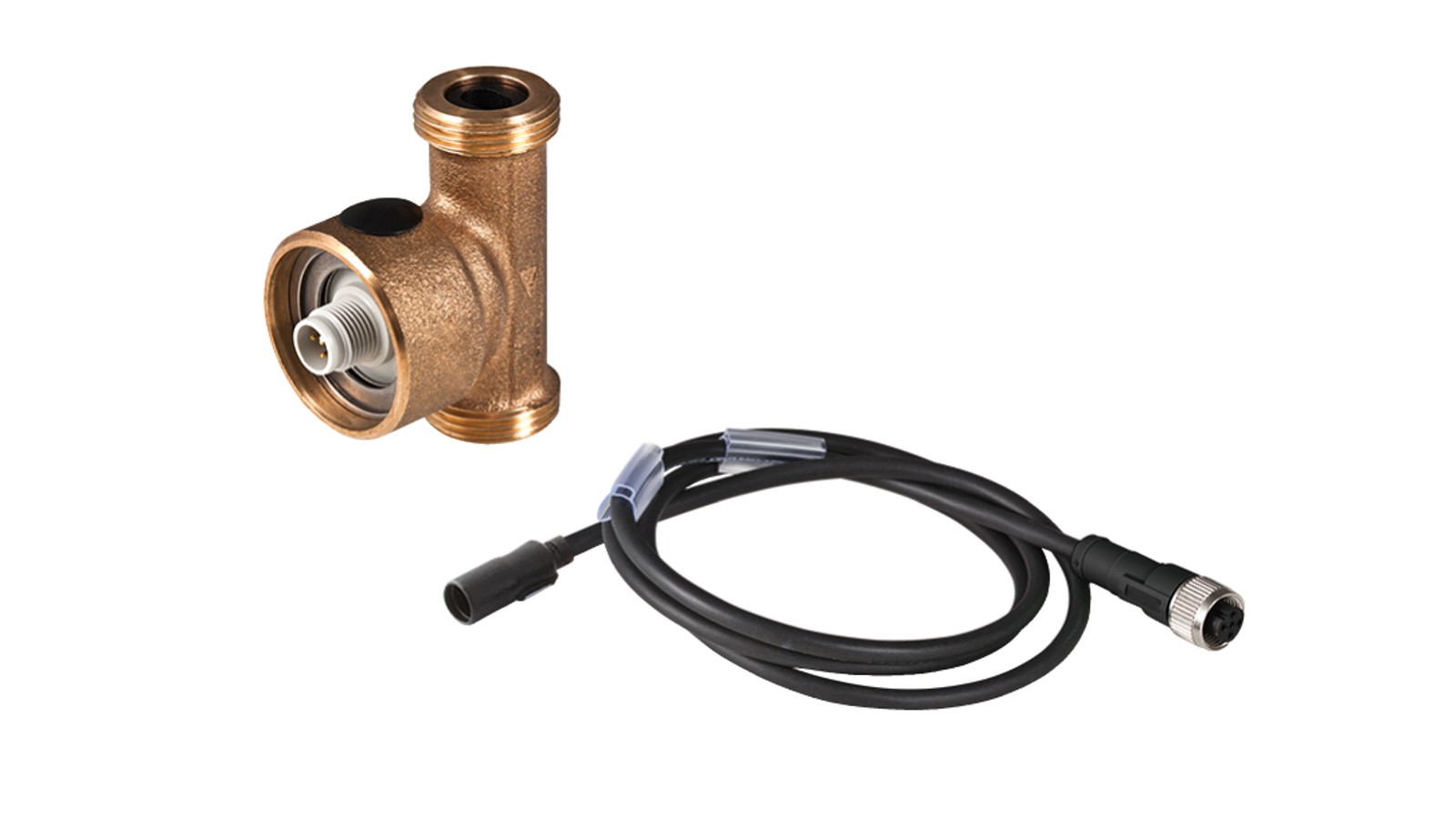
Geberit temperature sensor with male thread
- For potable water (cold and hot)
- Temperature sensor PT1000
- Stranded wire cable 4 × 0.25 mm²
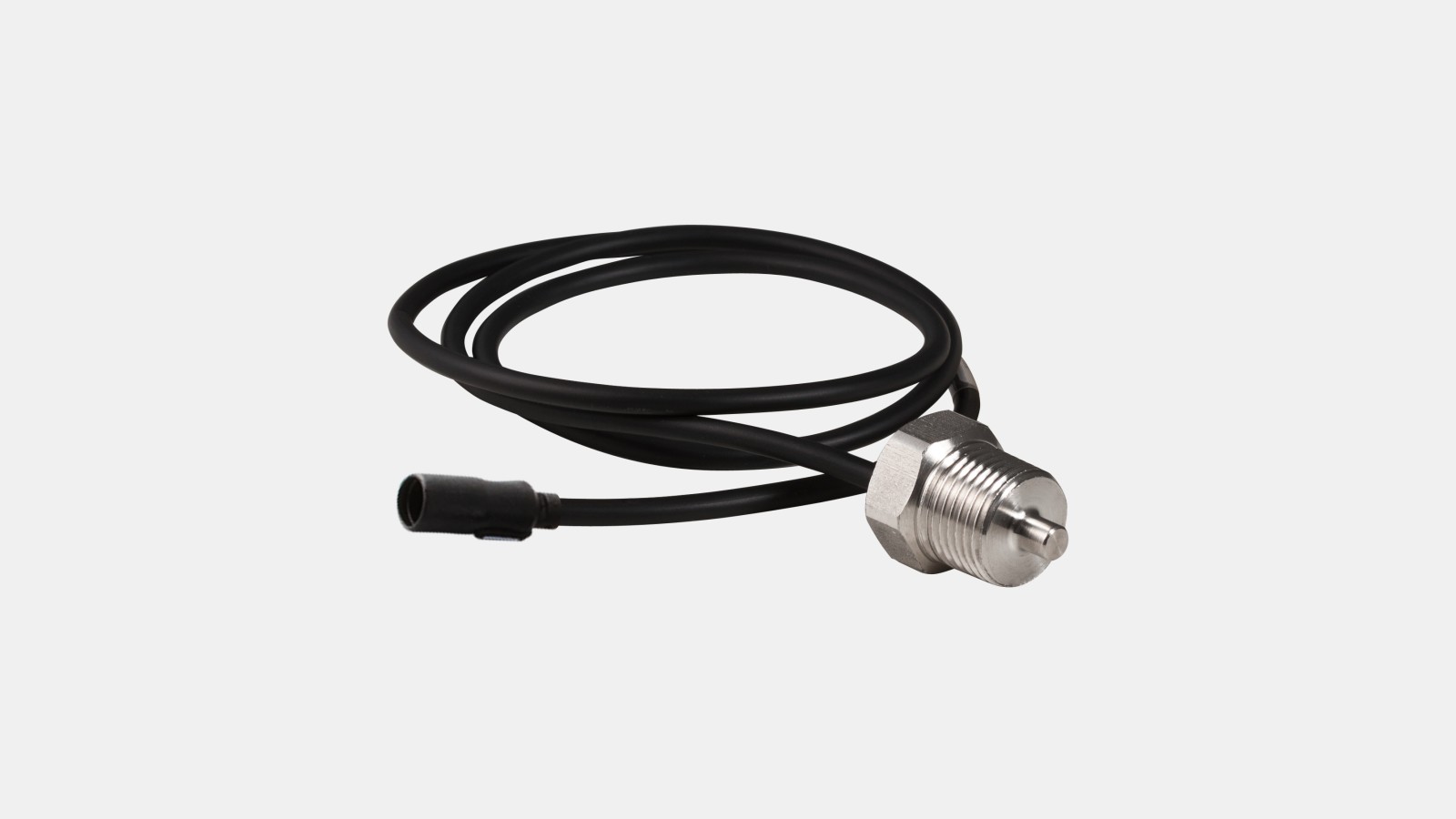
Supply systems
Clean installation right from the start
Geberit Supply Systems ensure exceptional standards of drinking water safety and hygienic processing.
- Geberit pipes and fittings are protected with protective caps
- The protective caps prevent contamination during storage and transport
- Do not remove the protective caps until immediately before installation
- Replace the protective caps during interruptions in installation
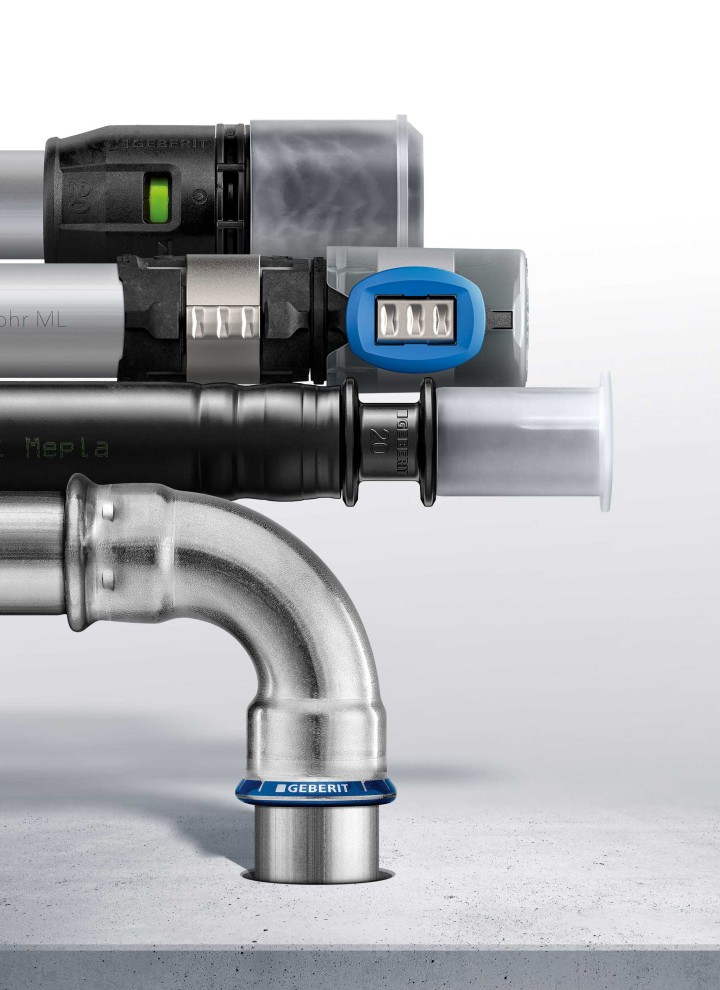
Flushing programmes for every operating situation
Interval flush mode
In interval flush mode, a flush takes place at regular intervals.
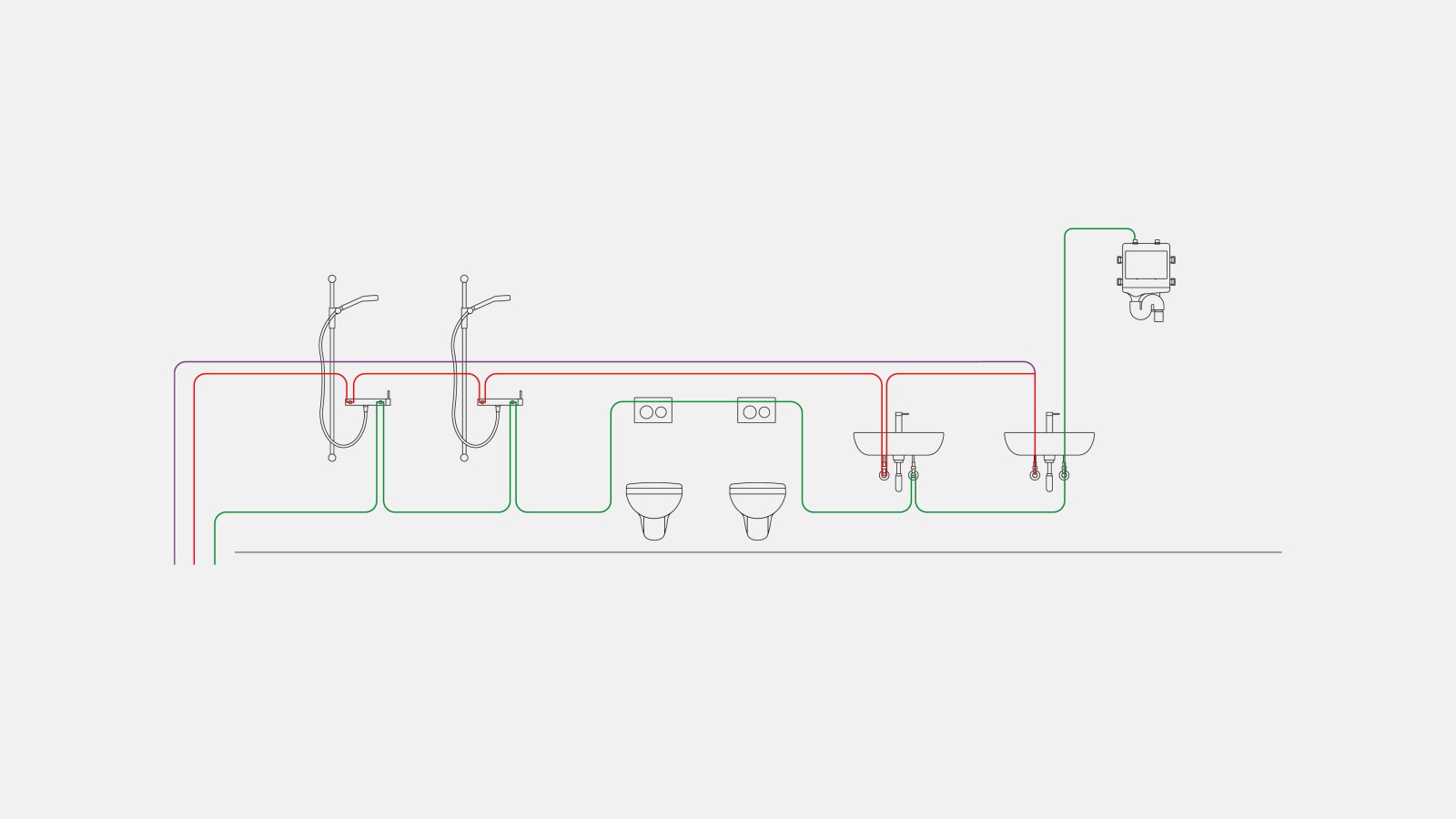

Time flush mode
The time-based flush starts at fixed times.
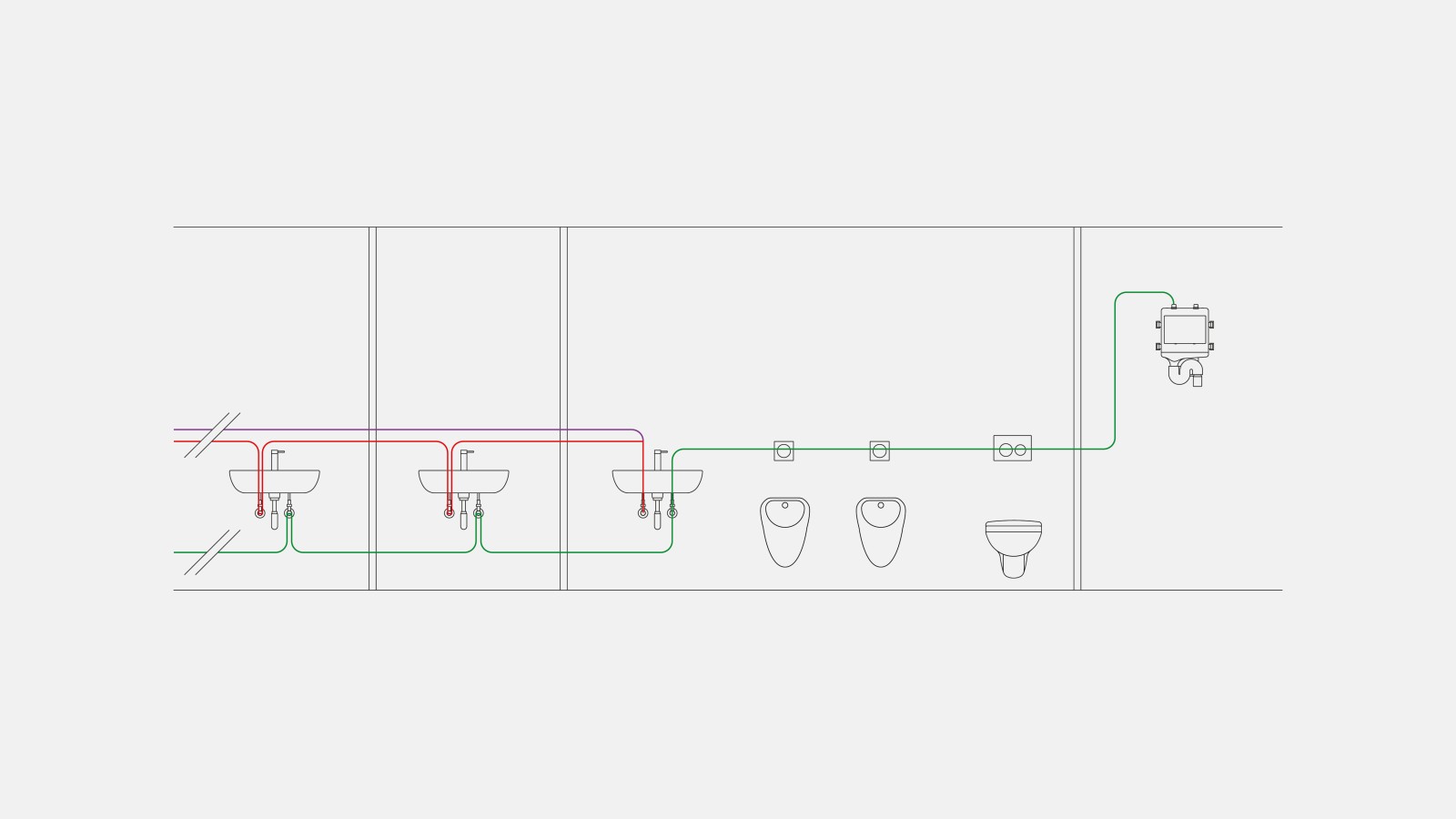
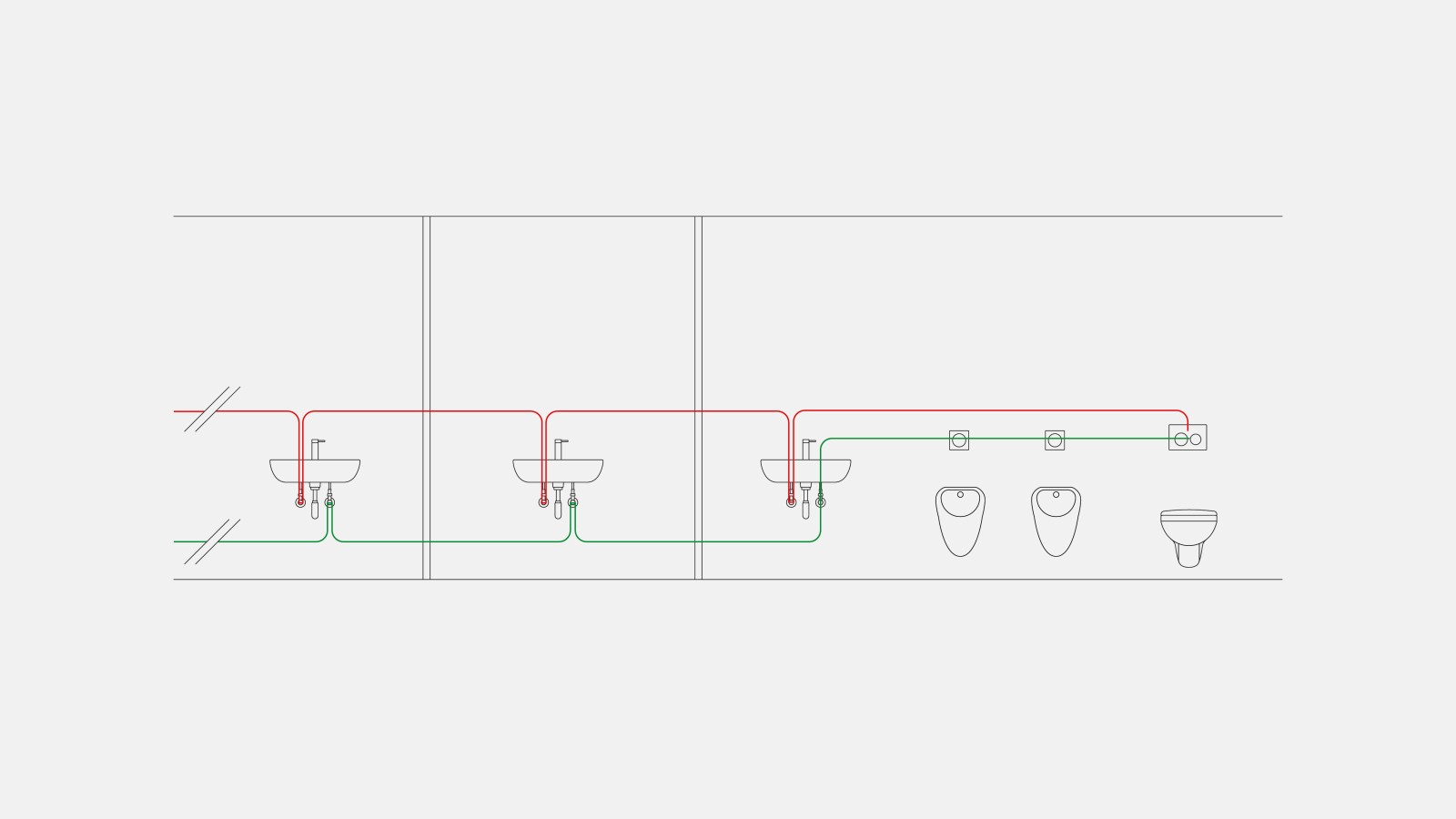
Temperature flush mode
In temperature flush mode, the flush starts when a particular temperature is reached (maintaining the specified water temperature).
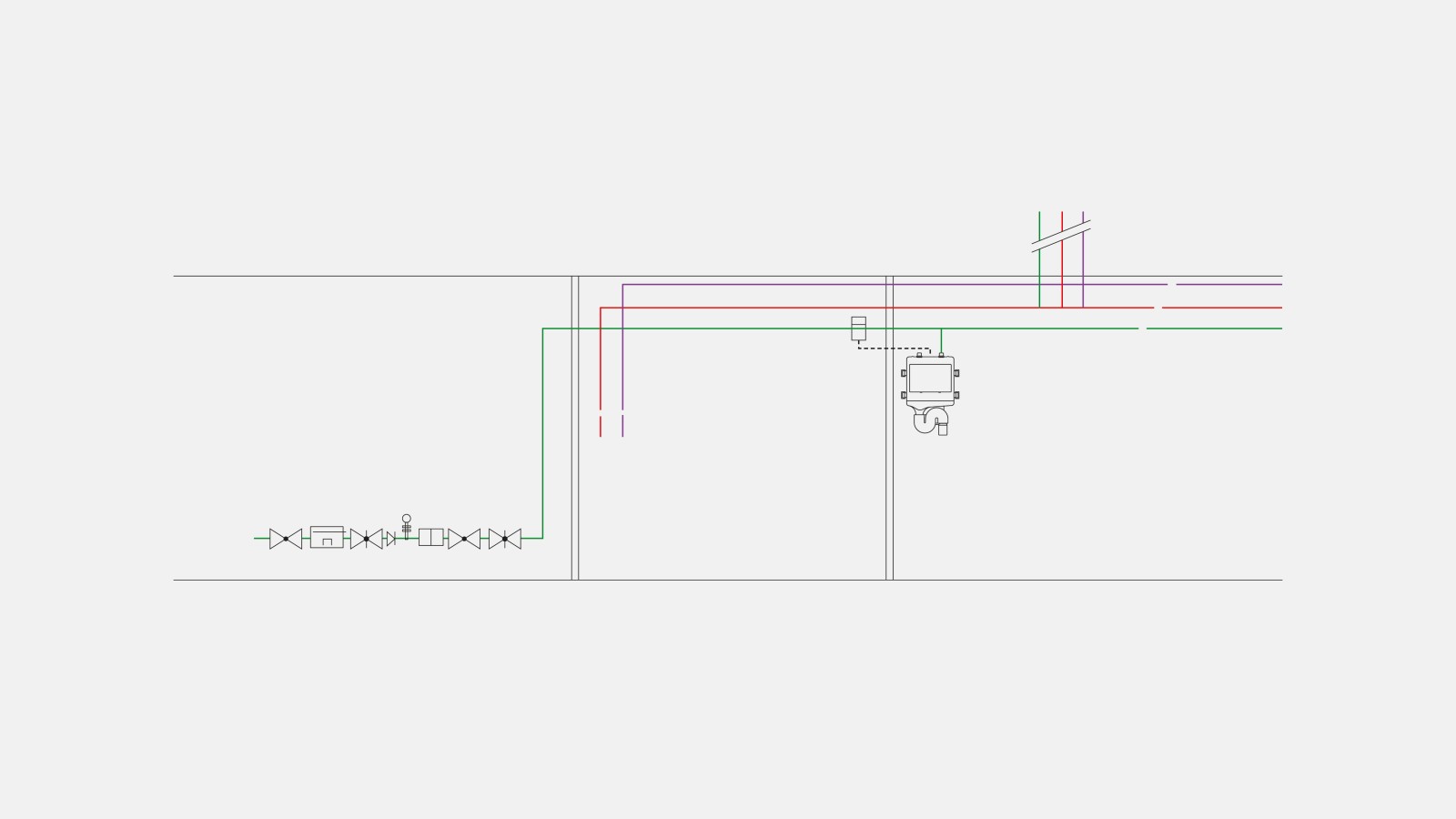
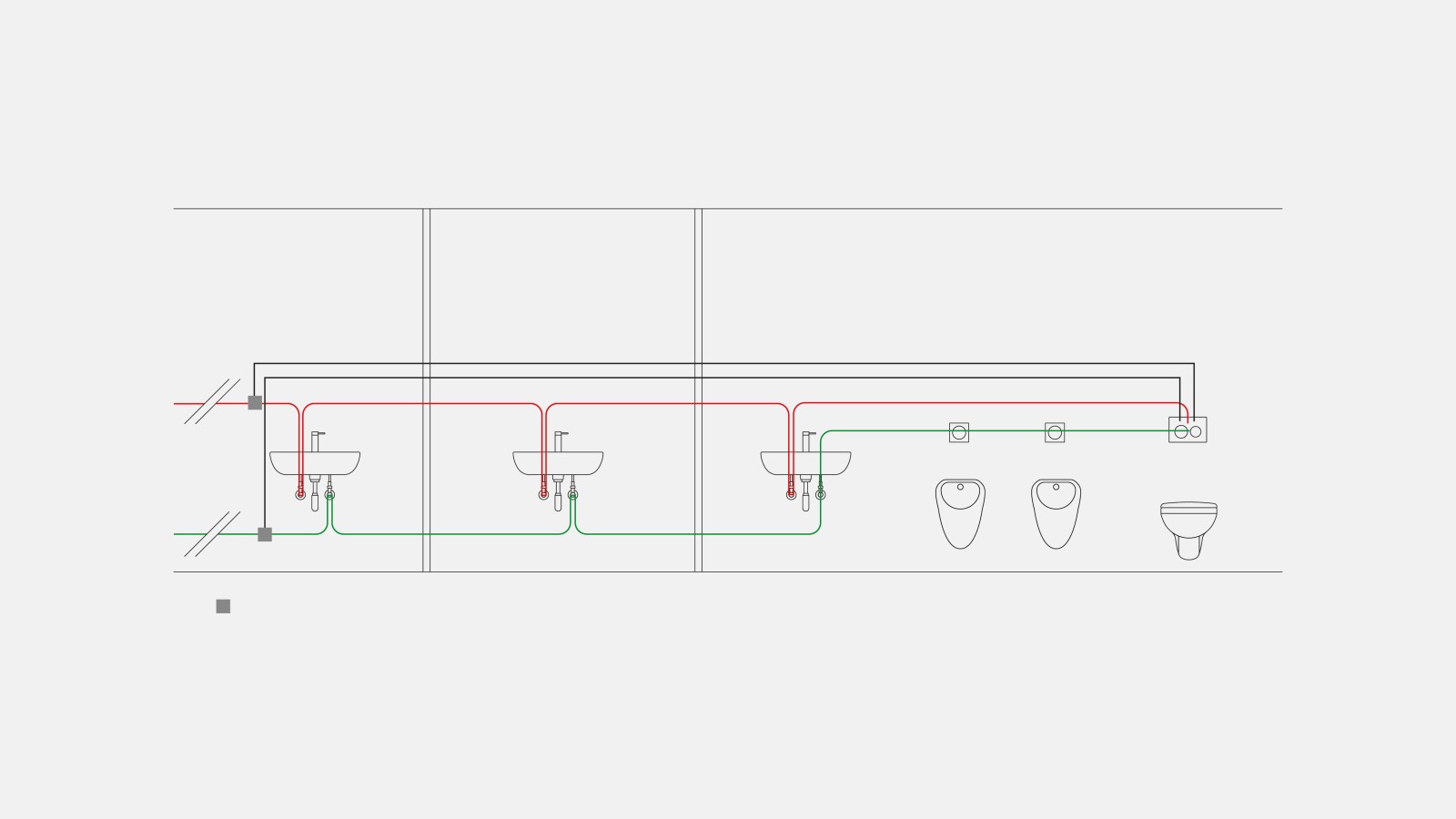
Volume flush mode
This volume-based operating mode flushes a defined amount of water.
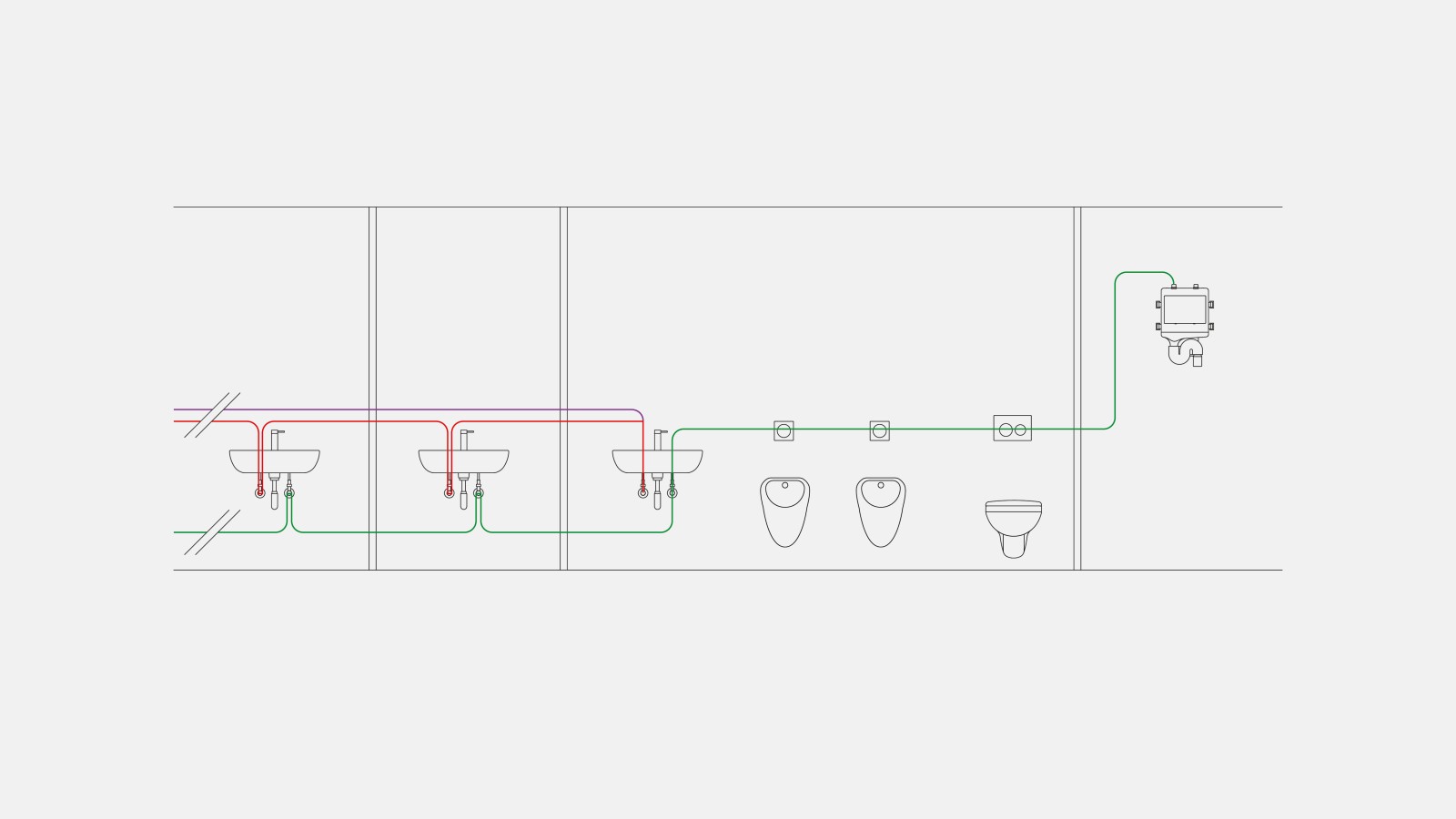
Consumption flush mode
The consumption flush mode actuates a “volume-optimised differential flush”. This flush only uses as much water as is needed to ensure correct operation.
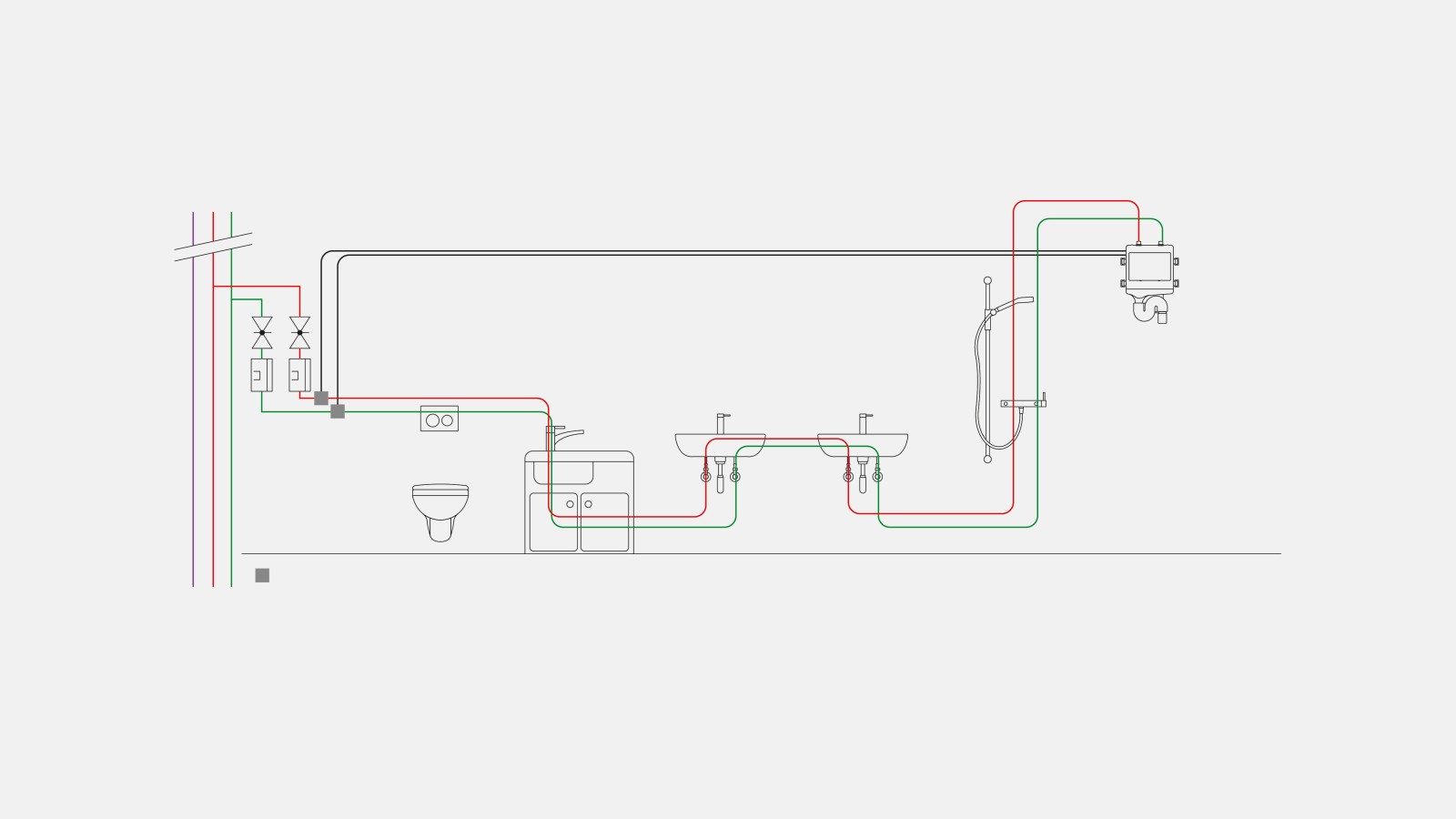
New Geberit sanitary flush Rapid
When you encounter serious hygiene issues resulting from stagnant drinking water, you need rapid action. With the new Geberit sanitary flush Rapid, the problem can be resolved quickly and easily. It is easy to use and provides all basic functions for regular water replacement. This compact and economical hygiene solution is battery-operated and can be put into action immediately, in exactly those areas that are at risk of stagnation. This makes it an ideal interim solution if, for example, major renovation measures cannot be implemented immediately.
Standards and laws
Guaranteeing drinking water quality in domestic installations is the subject of various ordinances and standards. At a European level, Directive 98/83/EC governs the quality of water for human consumption. Sanitary engineers, plumbers and operators are safe from a legal perspective if they observe directives like this and comply with country-specific regulations.